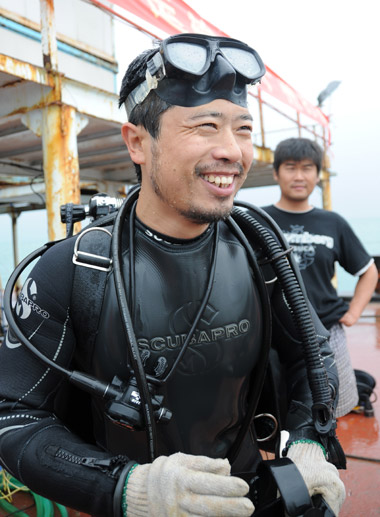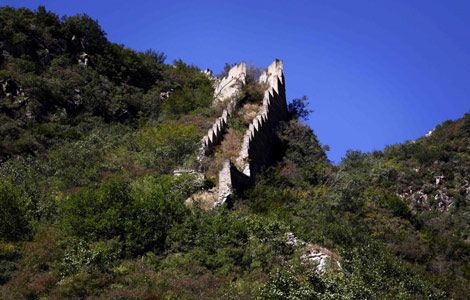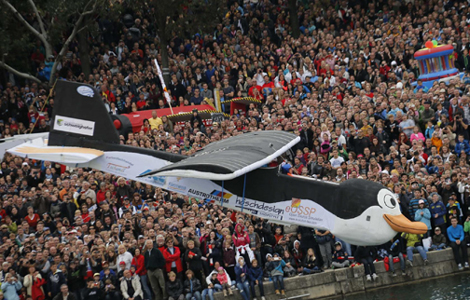Life under the sea
Updated: 2011-06-10 07:18
By Zhang Zixuan (China Daily)
|
|||||||||||
SHANTOU, Guangdong - When bubbles float up to the surface of the sea, divers on the workboat know that their colleague Liu Zhiyuan is ready to get out of the water.
 |
|
Liu Zhiyuan, a 34-year-old underwater archaeologist, is fresh out of water on the workboat excavating the 400-year-old sunken ship Nan'ao No 1 near Nan'ao Island in Guangdong. Provided to China Daily |
Following a guide rope, Liu finds the ladder and takes off his fins while a colleague helps to lift the two 50-kg oxygen tanks off his back.
Liu, an underwater archaeologist, is excavating the sunken ship Nan'ao No 1, which experts believe went down during the reign of Emperor Wanli (1563-1620) of Ming Dynasty.
It was found in 2007 in the South China Sea near the appropriately named Nan'ao Island in Guangdong province.
If everything goes well, Liu and his colleagues will be able to salvage all the cultural relics on it by mid-July.
So far they have recovered mostly porcelains, as well as copper coins and an iron cannon, which may have been for protection against pirates.
China started its underwater archaeology in the 1980s after British marine explorer Michael Hatcher discovered the wreck of the Dutch ship Geldermalsen, which sank in the South China Sea in 1751, and removed 150,000 Chinese porcelain artifacts.
Those relics were sold for $20 million at a Christie's auction in Amsterdam in 1986.
International law on underwater salvaging can be vague and inconsistent between countries, so when the Chinese government found no way to sue the explorer it decided to build its own underwater archaeology team.
Since 1989 the center has trained more than 90 underwater archaeology divers.
Liu, 34, who is also deputy director of the Underwater Cultural Heritage Protection Center of Guangdong Archeology Research Institute, holds certificates for 10 different diving categories, such as nighttime diving and underwater photography.
Like many other archaeologists, Liu took to his profession because "you never know what you'll find" in each excavation - or in Liu's case, each dive.
Since 2005 Liu has participated in 90 percent of all underwater archaeology projects in China, mostly in the southeast coastal areas.
However, as underwater excavation is extremely subjective to wind, water temperature and visibility, each year Liu and his colleagues have only two to three months to work on the sunken ship, usually from late April to mid-July, when it is warm enough and the monsoon season has not arrived.
"Every second that you spend underwater is highly risky," Liu said.
Attacks by jellyfish, for example, happen often, and even the lightest sting will take half a month to recover.
The fear of darkness and losing a sense of direction are also common.
Meanwhile, coping with the repetitive life on the boat is challenging, too.
Each diver can only make a 25-minute dive once a day, as they require at least 24 hours for their bodies to remove the nitrogen and bubbles that get into their blood when underwater.
So besides caring for equipment and the salvaged relics, Liu sometimes passes the time fighting with his colleagues in the online game Age of Empires.
"Liu used to beat seven enemies at the same time," said Jin Tao, who spent more than 100 days with Liu on the workboat last year. "But since we're all improving quickly, he can only beat three now."
Liu is also preparing for the upcoming poker and Chinese chess matches to be held between his underwater archaeologist fellows and work partners from the Guangzhou Salvage Bureau. The matches are played every day after 8 am until the end of June.
"My seasickness still makes me dizzy, but I'm ready to be the winner," Liu said with confidence.
He admits that underwater archaeology can earn a little more than field archaeology, but what really supports him is his strong love of the work.
"It's where my greatest passion lies," Liu said.











